Borching Su
Unimodular Waveform Design that Minimizes PSL of Ambiguity Function over A Continuous Doppler Frequency Shift Region of Interest
Apr 08, 2025Abstract:In active sensing systems, waveforms with ambiguity functions (AFs) of low peak sidelobe levels (PSLs) across a time delay and Doppler frequency shift plane (delay-Doppler plane) of interest are desirable for reducing false alarms. Additionally, unimodular waveforms are preferred due to hardware limitations. In this paper, a new method is proposed to design unimodular waveforms with PSL suppression over a continuous Doppler frequency shift region, based on the discrete-time ambiguity function (DTAF). Compared with existing methods that suppress PSL over grid points in the delay-Doppler plane by using the discrete ambiguity function (DAF), we regard the DTAF optimization problem as of more practical interest because the Doppler frequency shifts observed in echo signals reflected from targets are inherently continuous rather than discrete. The problem of interest is formulated as an optimization problem with infinite constraints along with unimodular constraints. To the best of the authors' knowledge, such a problem has not been studied yet. We propose to reformulate a non-convex semi-infinite programming (SIP) to a semidefinite programming (SDP) with a finite number of constraints and a rank-one constraint, which is then solved by the sequential rank-one constraint relaxation (SROCR) algorithm. Simulation results demonstrate that the proposed method outperforms existing methods in achieving a lower PSL of AF over a continuous Doppler frequency shift region of interest. Moreover, the designed waveform can effectively prevent false alarms when detecting a target with an arbitrary velocity.
Broadened-beam Uniform Rectangular Array Coefficient Design in LEO SatComs Under Quality of Service and Constant Modulus Constraints
Mar 12, 2024
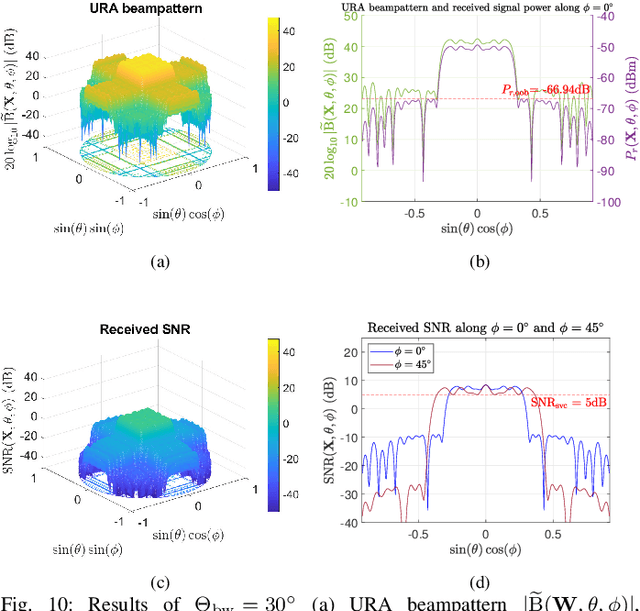
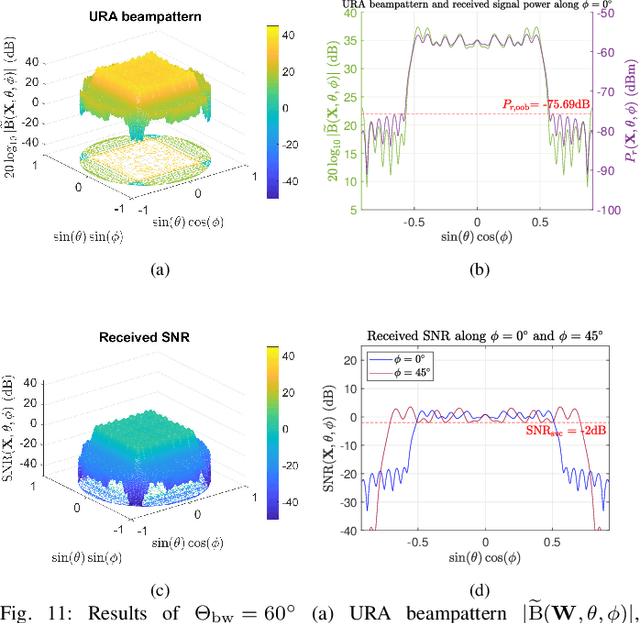
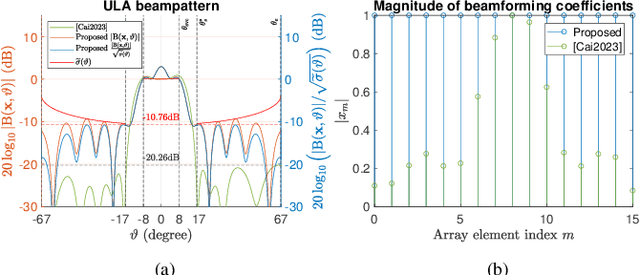
Abstract:Satellite communications (SatComs) are anticipated to provide global Internet access. Low Earth orbit (LEO) satellites (SATs) have the advantage of providing higher downlink capacity owing to their smaller link budget compared with medium Earth orbit (MEO) and geostationary Earth orbit (GEO) SATs. In this paper, beam-broadening algorithms for uniform rectangular arrays (URAs) in LEO SatComs were studied. The proposed method is the first of its kind that jointly considers the path loss variation from SAT to user terminal (UT) due to the Earth's curvature to guarantee quality of service (QoS) inspired by the synthesis of isoflux radiation patterns in the literature, constant modulus constraint (CMC) favored for maximizing power amplifier (PA) efficiency, and out-of-beam radiation suppression to avoid interference. A URA design problem is formulated and decomposed into two uniform linear array (ULA) design subproblems utilizing the idea of Kronecker product beamforming to reduce the computational complexity of designing URA.The non-convex ULA subproblems are solved by a convex iterative algorithm. Simulation results reveal the advantages of the proposed method for suppressing out-of-beam radiation and achieving design criteria. In addition, channel capacity evaluation is carried out and shows that the proposed ``broadened-beam" beamformers can offer capacities that are at least four times greater than ``narrow-beam" beamformers employing an array steering vector when beam transition time is taken into account. The proposed method holds potential for LEO broadcasting applications such as digital video broadcasting (DVB).
IANS: Intelligibility-aware Null-steering Beamforming for Dual-Microphone Arrays
Jul 09, 2023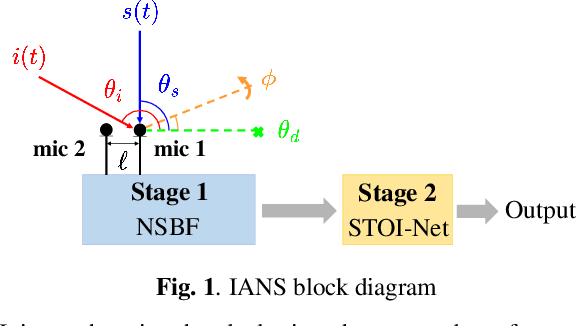
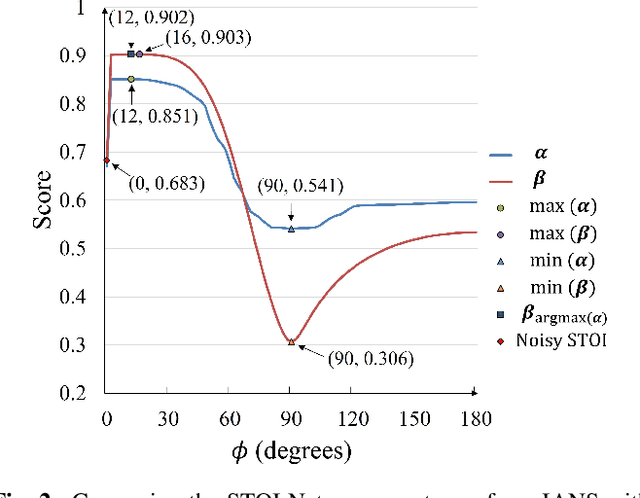
Abstract:Beamforming techniques are popular in speech-related applications due to their effective spatial filtering capabilities. Nonetheless, conventional beamforming techniques generally depend heavily on either the target's direction-of-arrival (DOA), relative transfer function (RTF) or covariance matrix. This paper presents a new approach, the intelligibility-aware null-steering (IANS) beamforming framework, which uses the STOI-Net intelligibility prediction model to improve speech intelligibility without prior knowledge of the speech signal parameters mentioned earlier. The IANS framework combines a null-steering beamformer (NSBF) to generate a set of beamformed outputs, and STOI-Net, to determine the optimal result. Experimental results indicate that IANS can produce intelligibility-enhanced signals using a small dual-microphone array. The results are comparable to those obtained by null-steering beamformers with given knowledge of DOAs.
Waveform Design for Optimal PSL Under Spectral and Unimodular Constraints via Alternating Minimization
Oct 16, 2022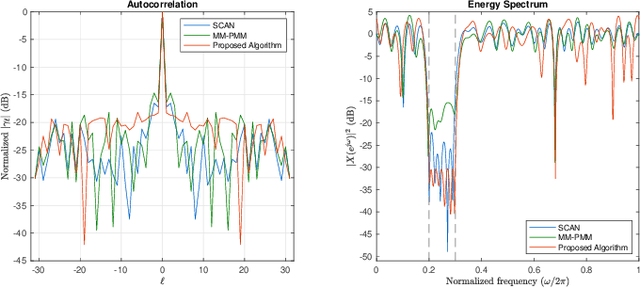
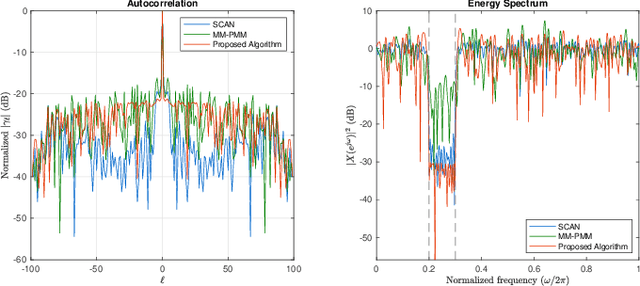
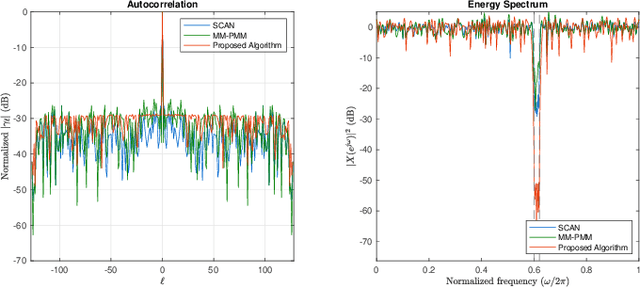

Abstract:In an active sensing system, waveforms with good auto-correlations are preferred for accurate parameter estimation. Furthermore, spectral compatibility is required to avoid mutual interference between devices as the electromagnetic environment becomes increasingly crowded. Waveforms should also be unimodular due to hardware limits. In this paper, a new approach to generating a unimodular sequence with an approximately optimal peak side-lobe level (PSL) in auto-correlation and adjustable stopband attenuation is proposed. The proposed method is based on alternating minimization (AM) and numerical results suggest that it outperforms existing methods in terms of PSL. We also develop a theoretical lower bound for the PSL minimization problem under spectral constraints and unimodular constraints, which can be used for the evaluation of the results in various works about this waveform design problem. It is observed in the numerical results that the PSL of the proposed algorithm is close to the derived lower bound.
Frequency Reversal Alamouti Code-Based FBMC with Resilience to Inter-Antenna Frequency Offsets
Sep 14, 2022

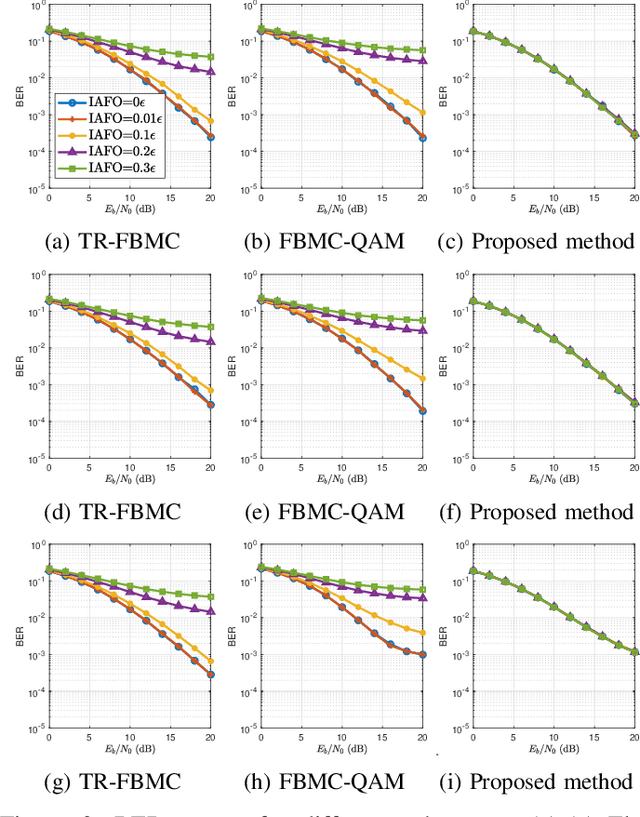
Abstract:Transmit diversity schemes for filter bank multicarrier (FBMC) are known to be challenging. No existing schemes have considered the presence of inter-antenna frequency offset (IAFO), which will result in performance degradation. In this letter, a new transmit scheme based on the frequency reversal Alamouti code (FRAC)-based structure to address the issue of IAFO is proposed and is proven to inherently cancel the inter-antenna inter-carrier interference (ICI) while preserving spatial diversity. Moreover, the proposed FRAC structure is applicable in frequency-selective channels. Numerical results show that the proposed scheme undergoes negligible bit error rate (BER) degradation even with considerable IAFOs.
Speech Enhancement Based on Cyclegan with Noise-informed Training
Oct 19, 2021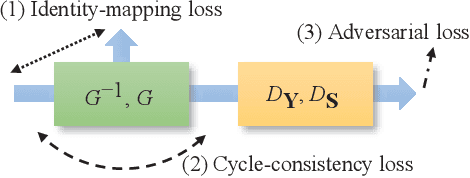



Abstract:Speech enhancement (SE) approaches can be classified into supervised and unsupervised categories. For unsupervised SE, a well-known cycle-consistent generative adversarial network (CycleGAN) model, which comprises two generators and two discriminators, has been shown to provide a powerful nonlinear mapping ability and thus achieve a promising noise-suppression capability. However, a low-efficiency training process along with insufficient knowledge between noisy and clean speech may limit the enhancement performance of the CycleGAN SE at runtime. In this study, we propose a novel noise-informed-training CycleGAN approach that incorporates additional inputs into the generators and discriminators to assist the CycleGAN in learning a more accurate transformation of speech signals between the noise and clean domains. The additional input feature serves as an indicator that provides more information during the CycleGAN training stage. Experiment results confirm that the proposed approach can improve the CycleGAN SE model while achieving a better sound quality and fewer signal distortions.
Downlink SCMA Codebook Design with Low Error Rate by Maximizing Minimum Euclidean Distance of Superimposed Codewords
Jan 09, 2021
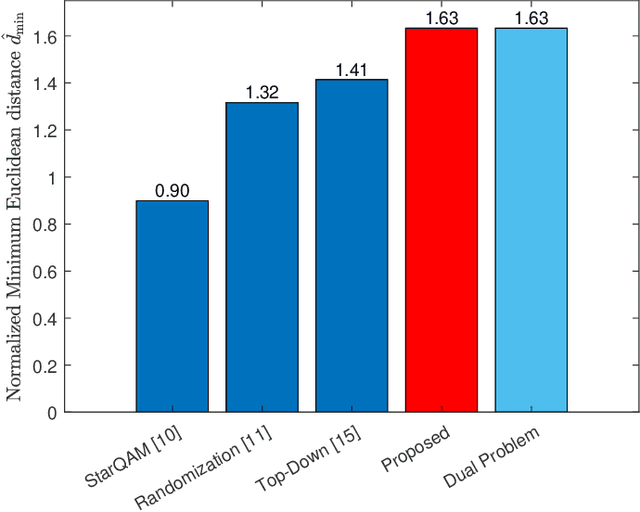
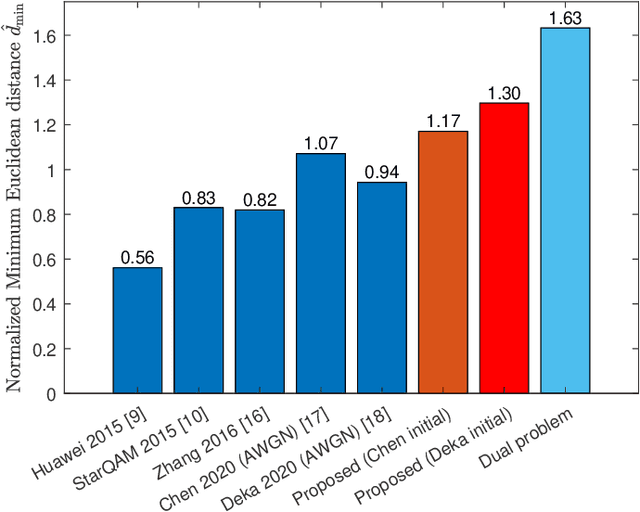
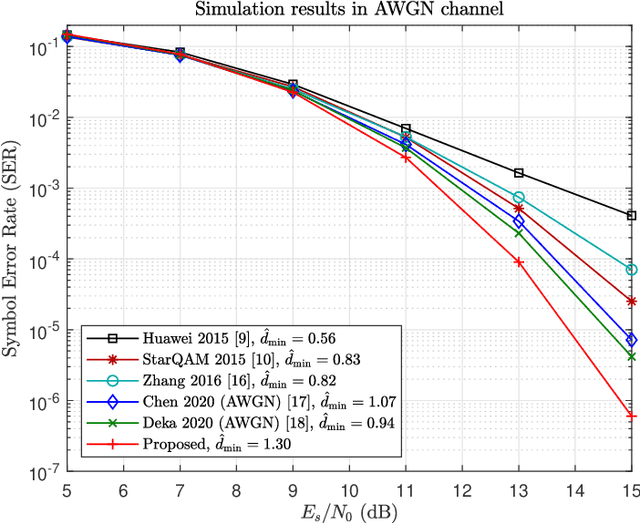
Abstract:Sparse code multiple access (SCMA), as a codebook-based non-orthogonal multiple access (NOMA) technique, has received research attention in recent years. The codebook design problem for SCMA has also been studied to some extent since codebook choices are highly related to the system's error rate performance. In this paper, we approach the downlink SCMA codebook design problem by formulating an optimization problem to maximize the minimum Euclidean distance (MED) of superimposed codewords under power constraints. While SCMA codebooks with a larger minimum Euclidean distance (MED) are expected to obtain a better BER performance, no optimal SCMA codebook in terms of MED maximization, to the authors' best knowledge, has been reported in the SCMA literature yet. In this paper, a new iterative algorithm based on alternating maximization with exact penalty is proposed for the MED maximization problem. The proposed algorithm, when supplied with appropriate initial points and parameters, achieves a set of codebooks of all users whose MED is larger than any previously reported results. A Lagrange dual problem is derived which provides an upper bound of MED of any set of codebooks. Even though there is still a nonzero gap between the achieved MED and the upper bound given by the dual problem, simulation results demonstrate clear advantages in error rate performances of the proposed set of codebooks over all existing ones. The correctness and accuracy of error curves in the simulation results are further confirmed by the coincidences with the theoretical upper bounds of error rates derived for any given set of codebooks.
 Add to Chrome
Add to Chrome Add to Firefox
Add to Firefox Add to Edge
Add to Edge